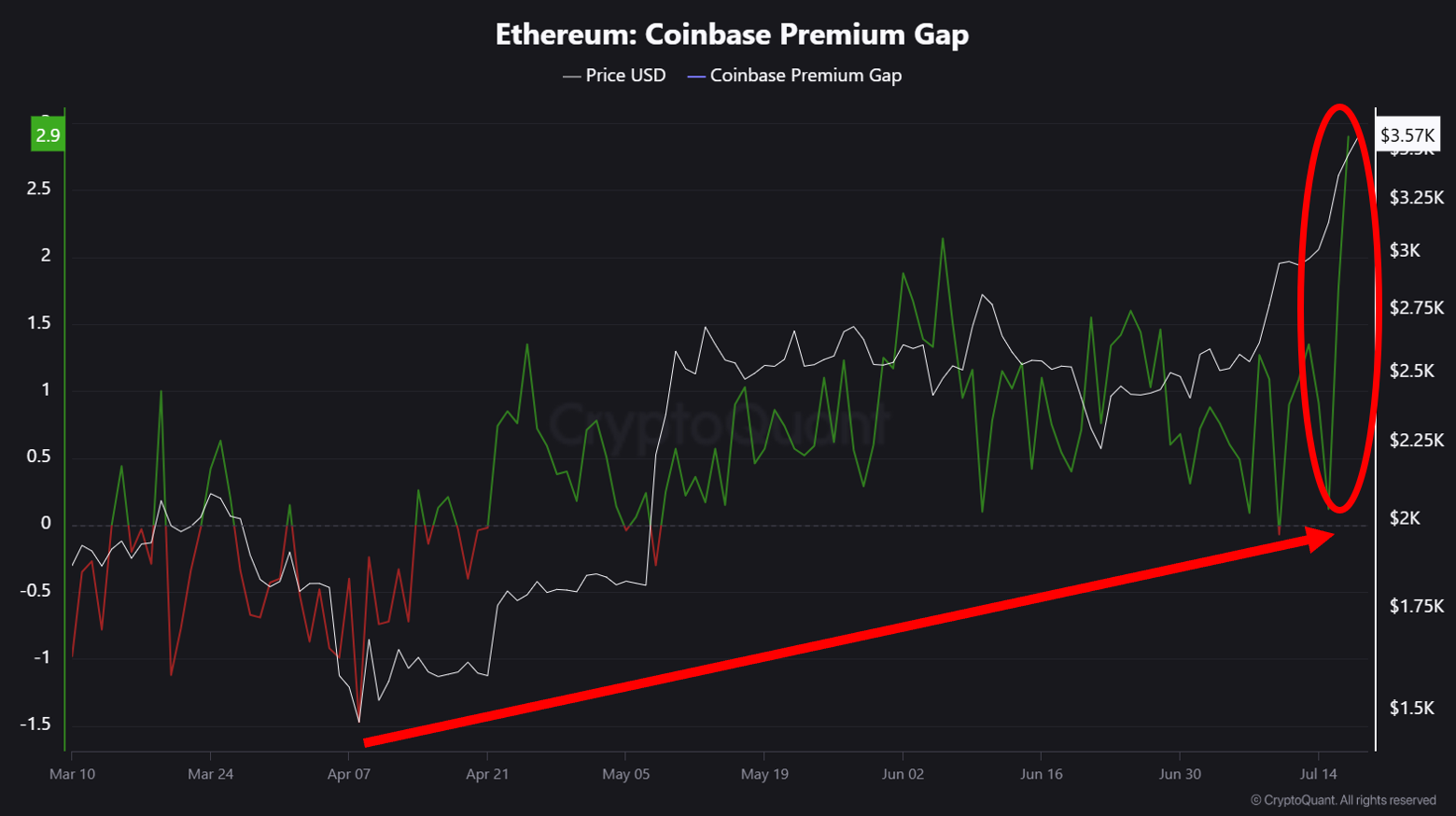The price of Ethereum has surged 8% in the past 24 hours and is now hovering around $3,612. This surge is driven by a number of strong drivers, from large inflows into spot ETFs to rapid market movements by institutions.
On July 18th, inflows into Ethereum spot ETFs reached $727 million, the highest daily figure since January 2025. Interestingly, this coincided with BlackRock’s official request to add a staking feature to its ETF. If approved, staking could reduce the circulating supply of ETH, and as is the fundamental law of trading, the scarcer it is, the more expensive it becomes.
Whales and institutions are quietly stacking Ethereum
On the other hand, on-chain data shared by analyst Crypto Dan at CryptoQuant shows a price premium for ETH on Coinbase. Typically, a higher price difference indicates a large buying volume. Indeed, there has been a sharp increase in buying volume from large players, also known as whales, in the US recently.

Not only that, the overall crypto market cap has also surpassed $4 trillion, rising by around 3.7% in the last 24 hours. Ethereum (ETH) now dominates over 11% of the total market. Interestingly, capital rotation from Bitcoin to ETH and other altcoins is also evident. The Altcoin Season Index surged 13% in just one day, indicating that money is starting to move in a more aggressive direction.
Furthermore, institutions are becoming more aggressive. BlackRock’s ETH ETF already holds 1.42 million ETH, with an annual inflow of $4.6 billion. Meanwhile, companies like Bit Digital are also quietly shifting their treasury reserves to ETH, totaling over 100,000 ETH. Not enough? Between June 28th and July 4th, several corporations added 205,000 ETH to their balance sheets.
However, there’s one caveat. The funding rate has surged 248% in the past week. This means many traders are opening long positions with leverage. If the price moves too quickly downward, massive selling pressure could occur. The market isn’t particularly hot right now. But if this pattern continues in the second half of 2025, it might be time to buckle up.

